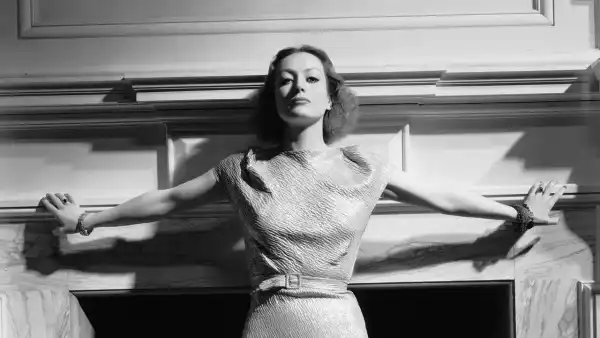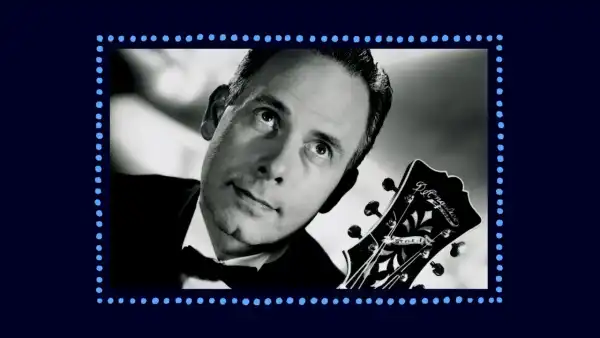
Save this storySave this storySave this storySave this story
Joan Crawford stands as my most cherished classic-Hollywood actress, despite the odd trajectory of her career. I regard her, as well, as the preëminent actress of the nineteen-thirties through the fifties, due only to a select number of performances—indeed, particular scenes. She appeared in relatively few exceptional films, and only a modest number of adequate ones, yet her acting, when at its height, distinguishes itself from that of her similarly esteemed colleagues. By demonstrating both acute affectation in self-portrayal and genuine sentiment in her portrayals, she embodies Hollywood’s contradictions in their most concentrated form. Her very name conjures both the magnificent and the preposterous aspects of classic Hollywood, sometimes even in identical offstage happenings and onscreen instances. A fresh biography of her, “Joan Crawford: A Woman’s Face,” penned by Scott Eyman (Simon & Schuster), explores Crawford’s life and legacy with passionate research, sincere curiosity, analytical lucidity, and unrestrained enthusiasm.
The volume brims with tales, quotations, and insights, but, most importantly, it signifies an impassioned pursuit of an idea: Eyman frames Crawford’s ascent to prominence as the very narrative of Hollywood celebrity. He illuminates the studio system’s contributions and detriments to its stars, how its mechanisms of facilitated self-improvement functioned, and what impacts they produced on those elevated and enriched by the system. In Eyman’s assessment, it constituted a societal and professional sphere that exerted intense stress on the heightened personalities who thrived there—of whom Crawford’s might stand as the ultimate illustration—and who, as a result, engendered the extreme life styles and aesthetic values for which classic Hollywood gained renown.
If a Hollywood picture exists that echoes the family in which Crawford grew up, I haven’t encountered it. Eyman searched fruitlessly for any official record of her birth, attributing the missing birth certificate to either familial destitution or instability. He estimates that her birth occurred around 1905 or 1906, possibly near San Antonio or in San Angelo, Texas. Her given name was Lucille LeSueur. Her father, Thomas LeSueur, abandoned the family around her birth, and, in 1909, her mother, Anna, married Henry Cassin, a theater executive in Lawton, Oklahoma, and relocated the family there. In Lawton, Lucille went by Billie Cassin—Billie being Cassin’s nickname for her—and she proved a boisterous youth, characterized by neighbors as a “total tomboy” and by others as underfed. She loved vaudeville acts and movies; Cassin encouraged her to explore a career as a dancer, leading her to position herself before the Lawton movie house, confiding to friends, “My picture will grace that screen one day.”
In the mid-nineteen-tens, Cassin faced monetary difficulties, compelling the family to move to Kansas City, where Lucille financially supported herself through two private institutions. In 1922, she matriculated at Stephens College, in Columbia, Missouri, covering her fees through employment in the dining hall. She lasted but a semester—her academic foundation lacked, and she sensed isolation due to her humble occupation—yet she thrived socially. A peer mentioned that she’d “constantly dance atop the dining-room tables and perform the Charleston in the kitchen”; she earned a reputation as the area’s best Charleston dancer. And a staff member remarked, of Lucille, “She enjoyed dating, and she fancied the men considerably.” Her academic setback became her fortune in existence and art.
Upon returning to Kansas City, Lucille obtained employment at a department store, until, around early 1924, she secured a dancer’s role in a show. After the show’s conclusion, she relocated to Chicago, audaciously entered a producer’s office, and gained employment as a dancer at a night club frequented by gangsters. Subsequently, the producer cast her in a show in Oklahoma City, and in another in Detroit, where a stage manager noticed her, hiring her to dance on Broadway. She debuted there in May, and by November a Metro-Goldwyn-Mayer producer in New York contacted her for a screen audition. Back in Kansas City with her mother for Christmas, and less than a year from first gracing a stage, she received a studio telegram summoning her to Hollywood, extending a six-month contract.
The studio promoted Lucille through a public-relations campaign, incorporating a movie-magazine competition to decide upon her new moniker. The magazine’s editor chose Joan Crawford, which she detested—she would implore friends to address her as Billie—though the renaming proved beneficial, not just commercially but, more importantly, psychologically. The emerging public image became her own creation, even her commercial product, and she invested tireless efforts in realizing it. She worked assiduously to make her face and her name ubiquitous as promptly and boldly as possible. Attired and styled ostentatiously, she partook in (and won) dance competitions in esteemed restaurants attended by Hollywood influentials. A female screenwriter noted, “Despite her commonness, everything about her seemed to proclaim, ‘Take heed. I’m pressed for time. Step aside.’ ” The silent-film era still prevailed, and Crawford capitalized on the minor parts she received, lingering on sets even when idle, to glean insights from renowned actors and skilled technicians. While acting in “Sally, Irene and Mary,” as the vivacious and sincerely romantic member of the titular trio, Crawford learned from the cameraman John Arnold to disregard rehearsals and cultivate spontaneity on camera. He also enlightened her regarding the most impactful type of shot; as she recalled, “A close-up like that carries such impact.”
Her performances across a diverse range of roles garnered recognition, even from F. Scott Fitzgerald, who, in a 1927 interview, lauded her as “unquestionably the finest representation of the flapper, the girl encountered in elegant night clubs.” By 1928, she was cast in principal roles, specializing in ambitious women: in “Our Dancing Daughters,” she depicted a sexually bold socialite dismissed as frivolous by her beloved; in “Our Modern Maidens” (1929), she embodied a pleasure-seeking heiress who seduces an older diplomat. Still, throughout her silent and early sound films, Crawford smiles excessively, flutters, and jokes with strained mirth. She scarcely resembles herself, barring sporadic shots where she exhibits the glare—the heated, intense stare—that would characterize her image. In those initial films, Eyman accurately observes, “The fundamental issue lay in her not yet discovering her distinct appearance.” This would soon emerge through the shared efforts of Crawford and studio stylists who molded her definitive iconography. Notably, the costume designer Adrian collaborated with her for twelve years, beginning in 1929. The garments he tailored for her, emphasizing her naturally wide shoulders, defined both her personal physique and the era’s fashion. Eyman asserts, “Adrian’s look for Crawford in the nineteen-thirties exerted Hollywood’s most profound influence on American fashion.”
Once Crawford embraced her style, she never strayed—at least, not publicly. “Never in our countless interactions did she appear less than impeccably dressed, with complete makeup,” an M-G-M publicist remembered. “She maintained perpetual elegance, even for a small gathering of twenty fans. She adhered to a self-crafted image and consistently embodied it.” (Furthermore, Eyman remarks that the studio head, Louis B. Mayer, “permitted Crawford to retain the outfits from her films, enabling her to consistently embody a star, at the studio’s expense.”) Douglas Fairbanks, Jr., (whom she wed in 1929 and divorced in 1933), reflected, “She ranked among the most diligent individuals I’ve ever encountered. Her sole excess, as I recall, involved ambition. She fully immersed herself in her career and her work.”
Eyman’s central assertion posits that Crawford’s quest for stardom “revolved around seeking and receiving the affection and recognition she had always yearned for yet never attained.” This resembles an M-G-M narrative. For Crawford, the business of stardom, the artistry of performance, and the desire for self-alteration existed inextricably. This skill did not emerge instinctively; it necessitated years of professional self-refinement and remains entwined with the narrative of crafting and evolving the genuine-seeming construct that defined Crawford. Through this, she transformed into the quintessential movie-made actor among all film stars. For instance, her efforts extended to promotional images; she often dedicated entire days to changing attire, hairstyles, and makeup for the photographer George Hurrell, who noted that “she utilized this opportunity to explore new personas that might potentially enhance her overall screen image.”
Her unwavering pursuit of visual self-knowledge transformed Crawford into a cinematography authority. The actor Raymond Massey, a co-star in “Possessed” (1947), stated, “She was the finest technician I’ve ever known. She could seamlessly match close-ups and wide shots. She had a complete mastery of lighting, camera lenses, and dressed to suit the camera rather than fellow actors.” The director Vincent Sherman, who collaborated with her on three films during the nineteen-fifties, concurred. “She collaborated to realize a comprehensive effect. You could engage her in conversations about the intended shooting style, the backdrop, and the editing process. She possessed awareness of every facet on set,” he affirmed. Crawford fixated on dictating her on-screen presentation, recalling, “I rigorously scrutinized my dailies each night. And I undertook a self-examination.”
Crawford also committed herself to acting—to conveying emotion, which she accomplished in a strikingly modern way, by authentically experiencing it. Having exclusively danced onstage, she lacked comprehension of pretense. Fairbanks reiterated: “She found it implausible that Lynn Fontanne could feel physically unwell yet deliver sophisticated comedy with supreme and subtle wit. Nor could she grasp how a distinguished actress such as Helen Hayes could deliberately reduce audiences to inconsolable weeping while contemplating a savory steak sandwich post-performance.” The result encompassed both simplicity and intricacy. Her speech, devoid of theatrical skill, stands direct, stark, and unaffected, and the meticulously refined artifice of her physical demeanor underpins the immediacy and spontaneity of the emotions she unleashed. Effectively, Crawford inadvertently developed a Method of her own design, later elucidating, “I remember each of my significant roles as if they were segments of my own life, because, at the time, I embodied the role, and it became my life for fourteen hours a day.”
Eyman underscores that M-G-M reigned as the most star-driven studio—and also the most top-down, administratively managed. Directors operated under strict control, and Crawford held most of them in low regard, though she held particular esteem for one: George Cukor, with whom she crafted three films—most notably, “The Women” (1939), wherein she played an unforgettably cruel supporting role as a department-store saleswoman who seduces a wealthy married man. During that heyday of studio filmmaking, actors, directors, screenwriters, and even music composers functioned under prolonged contracts (typically, seven years), and technicians (such as cinematographers, set designers, and hairdressers) remained permanent, salaried employees; consequently, each studio’s distinct style, dictated from above, permeated its films. Crawford’s early starring roles inclined toward resilient women, whether laborers, dancers, or playgirls, whose allure served as a source of influence. Still, M-G-M’s concept of risqué paled in comparison with other studios—and upon the complete implementation of the sanitizing Hays Code in the mid-thirties, the studio shifted, as Eyman notes, toward “middle-class domestic fantasy,” which clashed with Crawford’s persona and demeanor. Even her superior films at the studio (such as Dorothy Arzner’s “The Bride Wore Red,” a trio of films helmed by Frank Borzage that includes “Mannequin,” and her final film with Cukor, “A Woman’s Face,” which lends Eyman’s book its title) were hampered by sentimentality. Her renown diminished; many industry figures deemed her career defunct.
In 1943, Crawford requested release from her contract and promptly signed with Warner Bros., a more audacious establishment whose films emphasized hard-boiled and populist dramas. The inaugural film in which she was cast there, “Mildred Pierce”—filmed in 1944, released in 1945—garnered her an Oscar for Best Actress. Entering her forties, Crawford rebounded, bigger than before. Moreover, she had unlocked her artistic voice, yet, unfortunately, she scarcely realized this and felt comparatively dissatisfied about it. Upon joining Warner Bros., her style evolved, toughened, and not only due to the studio: by that point, she had recently endured a separation from a beloved man, the newspaper owner Charles McCabe, due to his marital status and reluctance to divorce his spouse. She was in her third marriage, also unraveling; she had adopted children (Christina, born in 1939, and Christopher, born in 1942; later, the twins Cathy and Cindy, born in 1947), adding more pressure. The Second World War infused an encompassing unease; her career transition proved stressful. She had appreciated the institutional protection afforded by M-G-M: her responsibility entailed punctual attendance and diligent work, which indeed consumed almost all her time.
Crawford asserted that, in the postwar epoch, “the lighthearted elements vanished from American movie-making.” Yet it was her films from this era that would endure most vividly. Postwar changes in the industry encompassed the emergence of a new and audacious cohort of directors, along with the unleashing of a freer spectrum of emotions (despite the Hays Code’s persistence) born from the traumas of war. One of Crawford’s stellar roles materialized in 1947, within a fervent postwar-themed drama, “Daisy Kenyon,” directed by Otto Preminger, wherein she portrayed a fashion illustrator ensnared between romance with a married, austere corporate lawyer (Dana Andrews) and a widowed architect, also a traumatized veteran (Henry Fonda). The industry shifted further with the antitrust consent decree of 1948, effectively disintegrating the studios by compelling them to divest themselves of movie theaters (thus draining a virtually guaranteed revenue stream) concurrent with the emerging challenge of television, which began cutting significantly into box-office earnings. Amid the ensuing economic crisis, Crawford, like numerous other actors, was released from contract—at the close of 1951, Warner Bros. dismissed her, and she turned freelancer.
Circumstances once more aligned favorably for Crawford, despite initial appearances. Just as her departure from M-G-M unlocked superior opportunities at Warner Bros., the transition to freelance work, notwithstanding heightened uncertainty, granted Crawford more influence and autonomy than she had ever possessed under contract. During the mid-fifties, she starred in two films directed by two of the era’s most explosively expressive, even expressionistic, filmmakers: Nicholas Ray’s Western “Johnny Guitar” (1954) and Robert Aldrich’s sentimental melodrama “Autumn Leaves” (1956). These, alongside the Preminger film, stand as Crawford’s crowning achievements. Ray’s film originated from a novel by a screenwriter who had dedicated it to her; she acquired the rights, and the arrangement was coordinated by her and Ray’s agent, Lew Wasserman, from MCA. Whereas Crawford had been considered a consummate professional at M-G-M, who “never stormed off a set,” according to her former M-G-M producer Joseph L. Mankiewicz, and “was never a pampered star,” in her freelance phase, Crawford understood her dominant position and leveraged it vehemently.
On “Johnny Guitar,” she vacated the set mid-production, threatening to abstain from returning unless revisions were enacted on the script. According to Ray, she declared, “Oh, what the hell, Nick, give it some balls. Write it for Gable, and I’ll assume the role.” According to the screenwriter Philip Yordan, she pronounced, “I aim to embody the man”—a character as assertive, valiant, and violent as any leading male protagonist in an action picture. Her ultimatum proved pivotal to the film’s triumph, both artistically and commercially. It’s the role that propels her performance style—indeed, film performance, period—to its utmost pinnacle of stylization. Her carriage, her facial gestures, her tightly controlled diction bear the closest resemblance to opera that the movies possess. The film generated substantial profits (bolstering both her career and Ray’s), yet it garnered scathing critiques, except in Paris, where the youthful François Truffaut effusively praised the film and extolled her performance. Subsequently, on “Autumn Leaves,” Crawford complicated Aldrich’s task through her extensive demands concerning wardrobe and personal amenities (such as the paint color and carpeting of her dressing room), leading him to speculate whether all her directors addressed such issues “in lieu of directing.” Here, her glare—playing a woman enamored of a troubled, aggressive man—trembled with confusion and empathy. The film earned the Silver Bear award for best director at the Berlin Film Festival, yet it did not achieve commercial success.
Eyman misinterprets this period of Crawford’s career:
Part of the obstacle involved the appearance Crawford had embraced in middle age. Eyebrows so pronounced they resembled caterpillars, a flamboyant lipstick slash, and denser makeup than she had utilized in prior years. These elements contributed to diminishing her facial mobility. The resultant effect approximated a Kabuki mask, which inevitably stiffened the visage of one of her generation’s most expressive actresses.
On the contrary, Crawford had reached the culmination of her style. However, she suffered the misfortune of achieving this at a moment and within an industry, entirely operated by men, wherein a woman of fifty was considered past her prime and no longer a romantic lead. She uncovered the most radical form of her self-portrayal during a cinematic epoch ill-prepared to employ it. She stood as both a creation and a casualty of Hollywood. In her youth, the phase that studios regarded as an actress’s prime, she resided within a gilded cage, confined to star vehicles over which she wielded limited control. Now, with the industry facing a commercial crisis and burdened by entrenched ageism and sexism, she had finally achieved control. She was liberated and resented it.
If the youthful Lucille or Billie’s beginnings appeared too unconventional for the Hollywood of that era, the same holds true for her romantic life once she rose to stardom, and Hollywood publicists remained occupied with concealing details from the press, just as screenwriters avoided addressing such themes in films. By the mid-forties, Crawford had married three times: to Fairbanks; to another star, Franchot Tone; and to a bit player named Phillip Terry. Additionally, as Eyman outlines, she engaged in numerous affairs—including with Clark Gable, Spencer Tracy, Glenn Ford, Vincent Sherman, Robert Wagner, and the lawyer Greg Bautzer. In 1938, she had an affair with the seventeen-year-old Jackie Cooper, who later depicted her as “a highly knowledgeable instructor of love . . . a woman of wild temperament. . . . I discerned her as an exceptional performer, from whom I learned things that most men only comprehend at a later age—if at all.”
In 1955, Crawford wed Alfred Steele, the chairman of Pepsi-Cola. “Until her final days, she spoke of Steele as the paramount love of her life,” Eyman writes, and, over the subsequent four years, she only participated in two films. Yet, in 1959, Steele passed away unexpectedly from a heart attack. Lacking finances and an outlet for energy, she promptly returned to acting. This resulted in “What Ever Happened to Baby Jane?” (1962), arguably the film for which Crawford is best remembered presently, yet which constitutes one of two unfortunate pillars of her posthumous image. From her initial discussions with Aldrich, the director and producer, regarding the project, Crawford intended for Bette Davis to play the principal role. Filming transpired in mid-1962, triggering a legend of animosity between the two stars, as dramatized in Ryan Murphy’s TV series “Feud.” According to Aldrich, “I believe it accurate to state that they held mutual animosity, yet behaved with absolute propriety: no scene-stealing, no contentious remarks in public.” The screenwriter Lenore Coffee described their distinctions: “Bette was highly . . . well-educated. Joan was not. Bette hailed from a respectable lineage and was a trained theatrical performer. Joan had educated herself to speak and spoke admirably.”
Sherman, who had directed both Crawford and Davis and maintained romantic associations with them, perceived their discrepancies methodically: “Off-screen and in life, Bette was simple, unpretentious, frank, and unaffected. The moment she embodied a role, she morphed into an affected and theatrical performer. Conversely, Joan appeared simple, unpretentious, frank, and unaffected when assuming a role, yet in existence, she embodied the polar opposite: affected, theatrical, and artificial.” Their primary conflict appeared artistic: Davis aspired to rehearse with complete expression, while Crawford preferred merely to recite lines. “I reserve myself until the camera rolls,” she stated. “After all, how much can one expend of oneself? Why expend it, for heaven’s sake, if it’s not being captured.” The disparity in their performances perfectly mirrors Sherman’s analysis: Davis’s elaborately mannered performance proves exceptionally effective within this film because its theatricality renders it, apropos the role, a form of self-parody. Crawford’s performance, less ostentatious yet far deeper, draws viewers into the emotional realm to the extent permitted by the Grand Guignol script. Davis occupies a sensationalist horror picture; Crawford stars in a far more substantial melodrama, and their two parallel narratives only connect through Aldrich’s directorial flourish.
The secondary unfortunate pillar of Crawford’s legacy stems not from her on-screen endeavors but from her reputation as a monstrous parent, as portrayed in her daughter Christina’s memoir, “Mommie Dearest”—which debuted in 1978, the year following Crawford’s demise—and later depicted in Faye Dunaway’s impassioned embodiment of her within the cinematic adaptation of the book, from 1981. Eyman accords Christina’s account minimal credence, yet the eyewitness testimonies he cites imply that Crawford’s treatment of her children veered beyond the boundaries of constructive parenting. A visitor to Crawford’s residence, while Christopher was approximately four or five, discovered him tethered to his bed at all four limbs. Crawford clarified that his hands remained tied “because he sucks his thumb,” and his legs “because he casts off the blankets.” After Crawford escorted Christina and Christopher to meet Shirley Temple, the child star recalled, “Each child performed mechanically, like a programmed toy.”
“It seemed as if Crawford had never witnessed the way an actual, quasi-normal family interacts,” Eyman writes. “In reality, she hadn’t.” Eventually, Crawford conceded as much:
I honestly doubt that stars of my epoch should have raised children, whether borne or adopted. . . . Take the element of time, to begin with. If working—and I worked almost incessantly during my children’s infancy—you would awaken before dawn five or six days per week, and return home by dusk, if fortunate. . . . In summation, we partly yearned for a genuine, intimate personal life—husband, children, hearth, the whole bit—yet our dominant desire centered on career, and that dominant inclination demanded adherence to the dictates of that career.
The sanitized relationships and moralistic compensations that define classic-Hollywood movies misrepresented private life in their own time and continuously distort the past; a narrative such as Crawford’s should dispel any nostalgia for past eras and the myth of their orderly decorum.
Throughout her performances, Crawford unveiled and exceeded the confines of Hollywood. She may have endeavored more assiduously for Hollywood recognition and achievement than fellow stars of equivalent magnitude, and she applied diligent effort to her acting—yet, most notably, she cultivated a craft uniquely her own. She embodies the grandeur of fully embraced and assimilated artifice, inseparable from her self-reconstruction through the camera’s lens. Consequently, the intense heat of her performances does not appear forced and exudes naturalness and candor; the intensity arises from her intrinsic essence.
Crawford assimilated all that Hollywood deemed inexpressible—all that remained unspoken, all that evaded definition, and all that defied representation in what she absorbed from existence, as a child, a striving outsider, and a luminary—and presented it all, one ardent fury at a time, through a performance format that constituted a symphony of images. Across decades, each time her eyes blazed onscreen, they conveyed a vibrant heat exceeding the projector’s radiance capable of igniting film. She infused sanitized movies with harrowing sincerity, rendered sentimental ones confrontational, and transformed shoddy ones into irrepressible authenticity. Within her tightly constrained spectrum of unyielding passion, infinite nuances unfolded—be it trepidation or dread, ire or indignation, torment or brutality—and, frame by frame, a multitude of admixtures of these and other sentiments, with volatile subtlety emanating from a restricted range of visages. This attribute rendered her the indispensable partner for a select few of the industry’s most emotionally and stylistically pioneering directors, and, regarding others with whom she collaborated, she elevated their films, one fierce expression at a time, surpassing any potential they might have conceived independently. Crawford not only enhanced their oeuvre or Hollywood in its totality; she amplified the art of cinema. ♦
Sourse: newyorker.com






